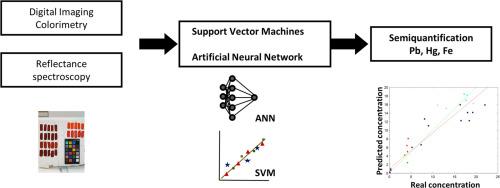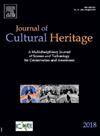An artificial intelligence-based semiquantitative method based on visible spectroscopy and imaging to analyse inorganic red pigments in wall paintings
IF 3.3
2区 综合性期刊
0 ARCHAEOLOGY
引用次数: 0
Abstract
Artificial Intelligence (AI) and Machine Learning (ML) are revolutionizing data analysis by introducing innovative and enhanced methods for data processing. In this article, a chemometric semiquantitative model based on visible spectroscopy and digital image colorimetry was applied to estimate the metal content in inorganic pigments. The model utilized Support Vector Machines (SVM) and Artificial Neural Networks (ANN) regression methods to correlate spectral and colorimetric data with elemental composition. Replicas were prepared and painted with three red inorganic pigments (cinnabar, hematite and minium), and they were analysed using portable X-ray fluorescence, visible reflectance spectroscopy, and digital imaging. Cross-reference between elemental and colorimetric information was performed using Support Vector Regression and Artificial Neural Networks, and the models were validated through Venetian-blinds cross-validation. In the calibration step, Root Mean Square Errors (RMSE) for Fe, Pb, and Hg were 0.03, 3.5, and 3.0 %, respectively, with correlation values (R2) of 0.99, 0.90, and 0.94. For the prediction set, RMSE was 3.0, 2.6, and 2.3 %, for Fe, Pb, and Hg, respectively, with R2 of 0.83, 0.92 and 0.81. This article demonstrates that innovative data treatment models, coupled with non-invasive and portable techniques, allow us to estimate the content of elements in inorganic pigments in Cultural Heritage samples.

一种基于可见光谱和成像的人工智能半定量方法,用于分析壁画中的无机红色颜料
人工智能(AI)和机器学习(ML)通过引入创新和增强的数据处理方法,正在彻底改变数据分析。本文建立了一种基于可见光谱和数字图像比色法的化学计量半定量模型,用于无机颜料中金属的含量估算。该模型利用支持向量机(SVM)和人工神经网络(ANN)回归方法将光谱和比色数据与元素组成关联起来。制作复制品并用三种红色无机颜料(朱砂、赤铁矿和微量)涂上,并使用便携式x射线荧光、可见反射光谱和数字成像对其进行分析。使用支持向量回归和人工神经网络对元素和比色信息进行交叉参考,并通过Venetian-blinds交叉验证对模型进行验证。校正步骤中,铁、铅、汞的均方根误差(RMSE)分别为0.03%、3.5%和3.0%,相关系数(R2)分别为0.99、0.90和0.94。对于预测集,Fe、Pb和Hg的RMSE分别为3.0、2.6和2.3%,R2分别为0.83、0.92和0.81。本文展示了创新的数据处理模型,加上非侵入性和便携式技术,使我们能够估计文化遗产样本中无机颜料中的元素含量。
本文章由计算机程序翻译,如有差异,请以英文原文为准。
求助全文
约1分钟内获得全文
求助全文
来源期刊

Journal of Cultural Heritage
综合性期刊-材料科学:综合
CiteScore
6.80
自引率
9.70%
发文量
166
审稿时长
52 days
期刊介绍:
The Journal of Cultural Heritage publishes original papers which comprise previously unpublished data and present innovative methods concerning all aspects of science and technology of cultural heritage as well as interpretation and theoretical issues related to preservation.
 求助内容:
求助内容: 应助结果提醒方式:
应助结果提醒方式:


